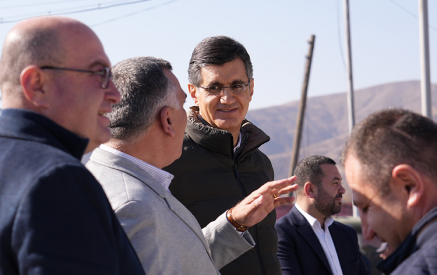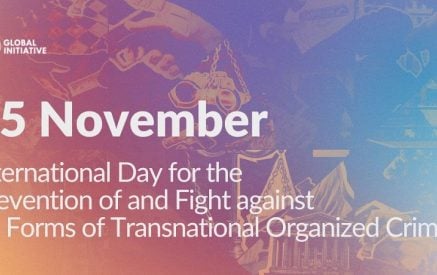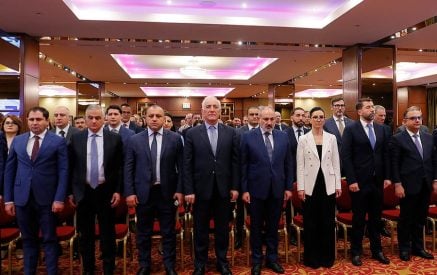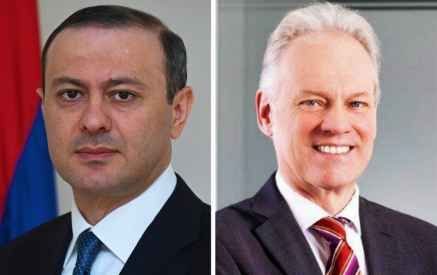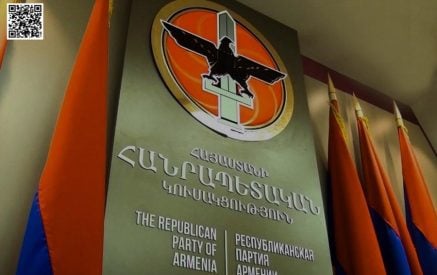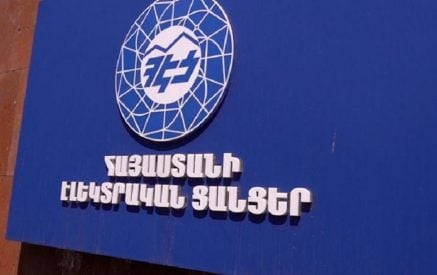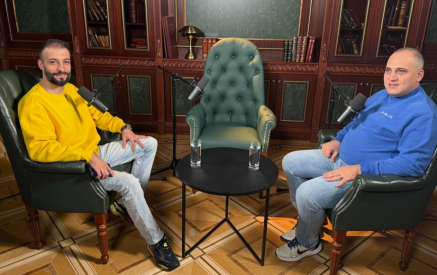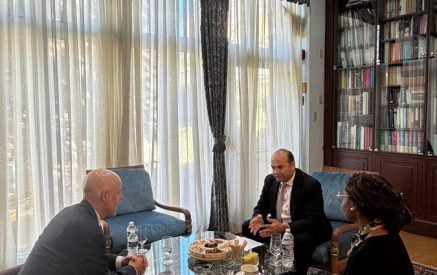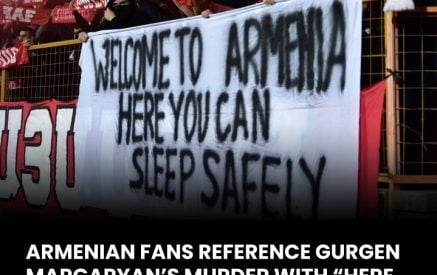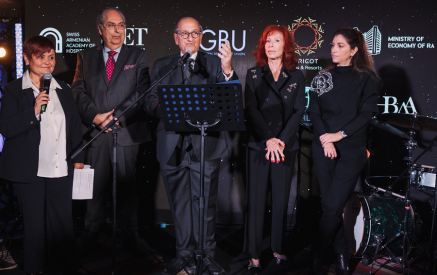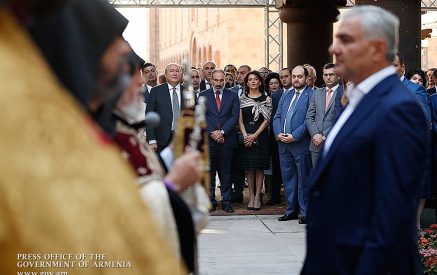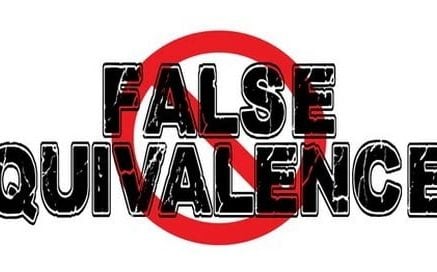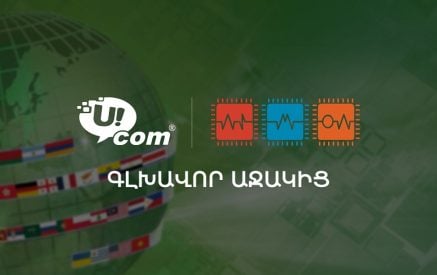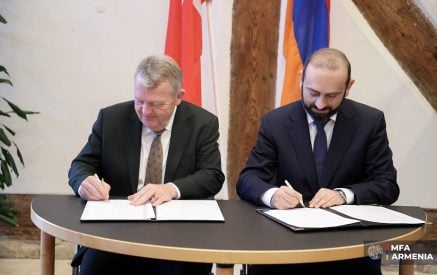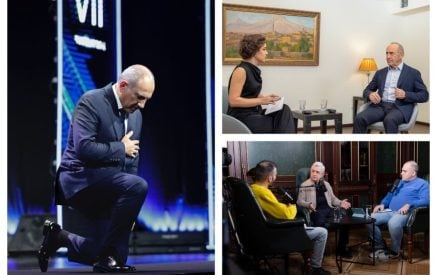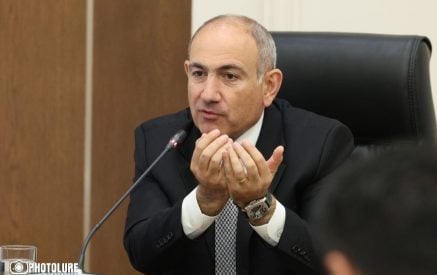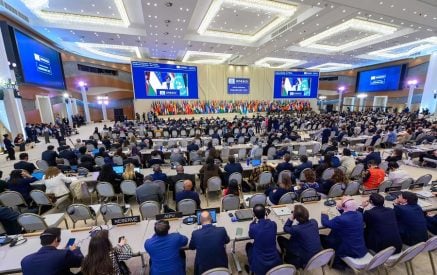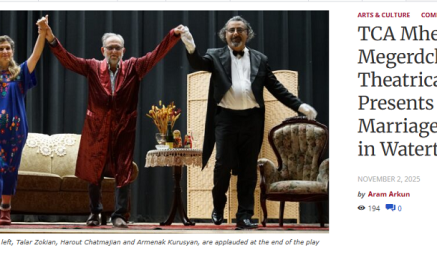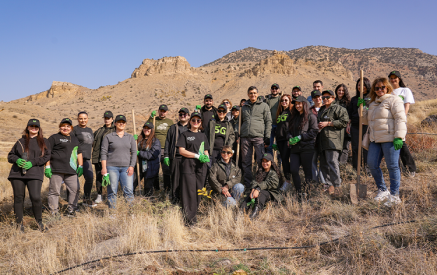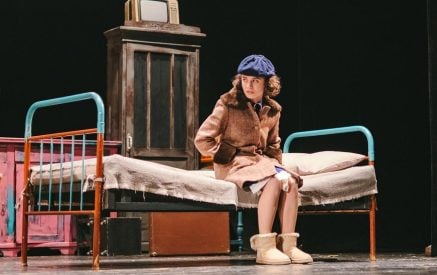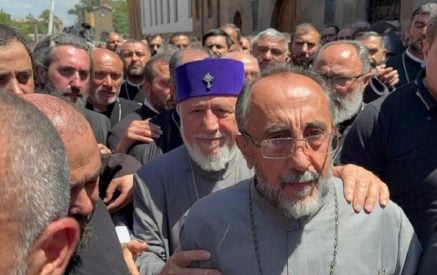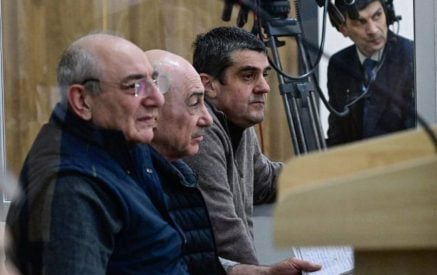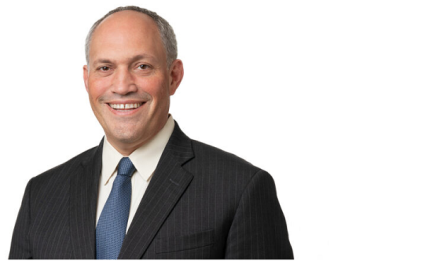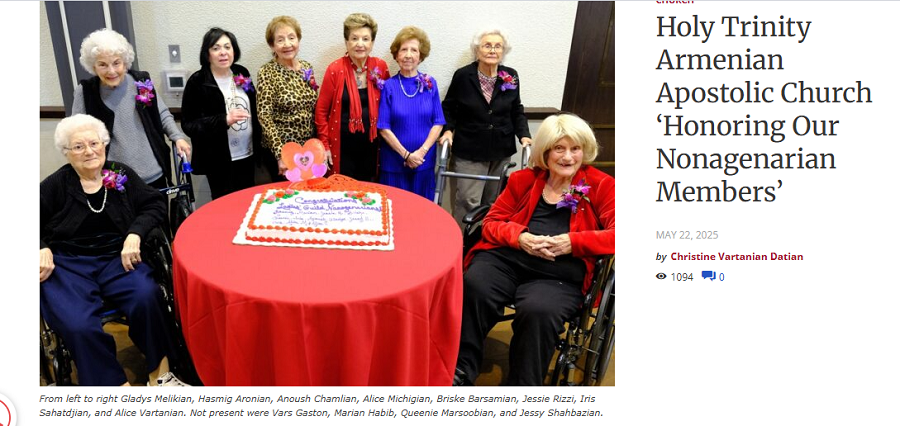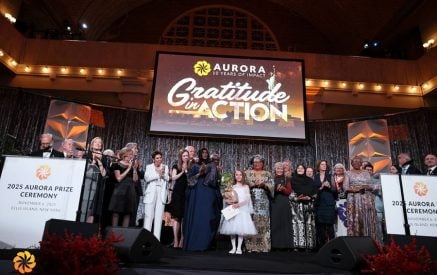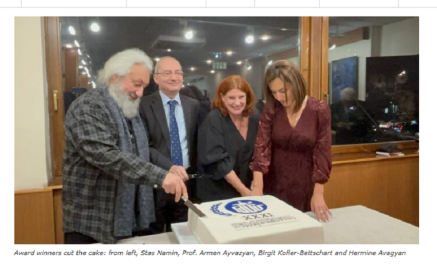by Christine Vartanian Datian
A special note: Alice Vartanian, a beloved mother, grandmother and great grandmother, is the mother of Christine Vartanian Datian, a longtime contributor to the Armenian Mirror-Spectator. In May, Alice celebrated her 96th birthday in Fresno with her family and friends. Alice is a native of Lowell, MA, and the daughter of the late Levon and Peppy Sarkisian of Adana, Turkey.
FRESNO — “The theme for the Holy Trinity Armenian Apostolic Church Ladies’ Guild February luncheon was ‘Honoring Our Nonagenarian Members.’ It was a special gathering to honor our beloved members who are 90 years old or older,” said Sophia Mekhitarian, chair lady of the event.
“Upon doing some research, we discovered we have 12 current members who have reached 90-plus years, also known as nonagenarians. It seemed fitting to invite these ladies and their families to our luncheon to celebrate their outstanding contributions to our church, and to thank them for their legacy that is being carried on by the next generations.”
“Families submitted short biographies and photographs of the honored guests and a keepsake program booklet was created. As the honorees arrived, each received beautiful corsages. After a social hour of California wines and delicious mezze, 94 attendees were welcomed by chairwoman Janet Williams. The Very Rev. Ashod Khachadourian led the group in a prayer and extended his congratulations to each of the honorees. Vocalist Hratch Gaydzagian serenaded the audience during the lunch served by our youngest members.”
“Following the lunch, chair lady Sophia spoke of the importance of this special acknowledgment and gave each honoree an opportunity to say a few words of wisdom and advice. The afternoon concluded with the serving of a congratulatory cake and more socializing. It was an unforgettable event for all, and we were honored to be a part of this exclusive celebration, a first of its kind.”
“The luncheon committee thanks our dedicated staff, volunteer photographer Alain Ekmalian, and all Guild members not on the committee, as well as the children and grandchildren of the honorees for their help and cooperation in making this a successful and memorable event,” added Williams.
“The Ladies’ Auxiliary was organized in 1914, the year the new church was built. This supporting membership of 68 young ladies was dedicated to the church in all areas — visiting the ill and shut-ins, and was the only major fundraiser for many years. They taught the Armenian language classes on Saturdays to all age students. These pioneer members had a significant role in church Christian life. In later years, these senior members were responsible for preparation and serving the memorial (hokejosh) luncheons.”
“The Trinity Guild was formed in 1949 with the goal of improving Sunday School attendance. The Holy Trinity Ladies’ Guild was formed in 2011 as a result of combining the Ladies’ Auxiliary and Trinity Guild. The purpose and objectives of the Ladies’ Guild are to promote and perpetuate the Armenian Apostolic faith and to encourage all members of the church and its community to join and participate in church activities. The Ladies’ Guild offers financial support to the church and its affiliated groups and promotes the social, educational, and spiritual wellbeing of church members.”
“The fundraisers evolved into the Annual Bazaar. Yearly service activities include working for the lunch delivery in the spring, hosting a joint dinner meeting with the Men’s Society, participating in the April 24th Commemoration as well as baking and cooking throughout the year to prepare for the Annual Grape Blessing Picnic and Bazaar.”
Membership is open to anyone who is 18 years of age or older and a dues-paying member of Holy Trinity Armenian Apostolic Church. Ladies’ Guild membership dues are $25 a year. Monthly meetings are on the first Tuesday of each month, with no meetings held in July and August. April through October are dinner meetings and November through March are lunch meetings.
The Holy Trinity Armenian Apostolic Church of Fresno is the oldest Armenian Apostolic church in the Western United States. The first Holy Mass-Badarak was officiated by Rev. Aharon Melconian in 1895. The church is registered as a National Historic Site in downtown Fresno. The church was added to the National Register of Historic Places on July 31, 1986. It is currently one of the six Armenian churches in the Fresno area. See: https://npgallery.nps.gov/AssetDetail/NRIS/86002097
Historical significance:
The Holy Trinity Armenian Apostolic Church was the first church built in the tradition of Armenian church architecture in the United States. It additionally is the first designed by an Armenian architect, Lawrence Karekin Cone (Condrajian). Cone was Fresno’s first Armenian architect. Although there are older churches in the United States used for Armenian services, these facilities either were existing church structures not built for Armenians, or built by Armenians with no reference to Armenian church architecture. It is rumored that during construction, placed within its foundation was a handful of soil from an ancient Armenian church in present-day Turkey – historic Armenia. The church was located at the center of “Old Armenian Town,” a ten to twelve-block area in downtown Fresno. Old Armenian Town is a large area of Downtown Fresno where most Armenian immigrants settled in Fresno. Most of the following historic sites were once part of Old Armenian Town. Some important parts of this area are still standing, such as the Holy Trinity Armenian Apostolic Church and Valley Lahvosh Baking Company. Because of the war effort in the 1940s, prejudice, and the expansion of the highway system, the Armenian population moved from Old Armenian Town toward the edge of the city or parts of the countryside. A set of houses and buildings stood as a historical site and monument to the legacy of the area. This area remained predominantly Armenian until the mid-1950s, when many Armenians there became financially and socially successful and moved out.



